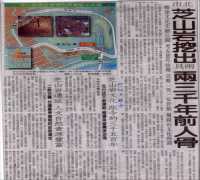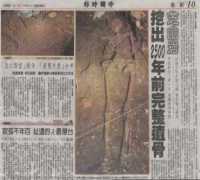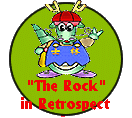
archeological discoveries
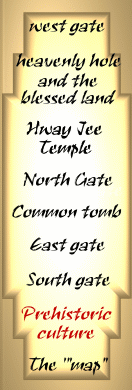
[prehistoric culture] [cultural/historic
park]
[unique plantlife] [archeological characteristics]
[human
history]
[archeological discoveries ]
|
title:discovered two well-preserved skeletons |
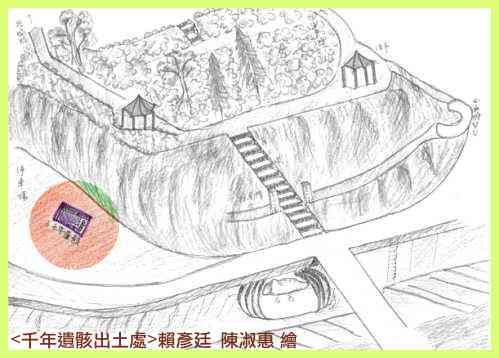 |
artist: Lai and Chen ( team members ) |
The
Taipei City government discovered two well-preserved skeletons while undergoing
construction of the Chee-Shan cultural/historic park. Archeologists
Mr.Liu concluded that they belong to the Yuan Shan age about 2,500 to
3,000 years ago.
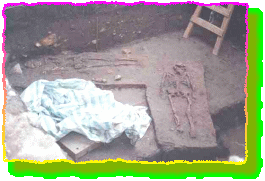
These two skeletons were vertically aligned to each other and are the most intact skeletons discovered in recent years; the small ceramic urns in front of their chests are suspected to be objects they chose to die with in their tomb.
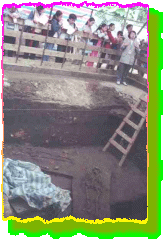 10,000
years ago, Taipei was still a salt-water lake, and the only thing that
was above water was Chee-Shan Rock and yuan-shan. Pre-historic humans
resided in these two places, and during recent constructions, shells and
other types of sea animals were found.
10,000
years ago, Taipei was still a salt-water lake, and the only thing that
was above water was Chee-Shan Rock and yuan-shan. Pre-historic humans
resided in these two places, and during recent constructions, shells and
other types of sea animals were found.
Back in 1996, a skeleton has been discovered in this area. The skeleton was about five feet tall, and the bones were already fossilized. Judging from the soil layer, it belonged to the Yuan Shan age or later. The two skeletons discovered this year are much more well preserved.
They are about 2,500 to 3,000 years old, and provide a profound impact on research in this area, but the actaul date would require further investigation by related authorities.
<<related media coverage>>
| headline |
| **two 2,000 year old skeletons discovered in Chee-Shan Rock |
|
reporter Chang/Taipei[2000/12/08][Lian Ho Times] |
| **Chee-Shan Rock filled with natural and cultural resources |
|
reporter Nio/Taipei[2000/12/08][Lian Ho Times] |
| **Chee-Shan Rock age dates back 3,500 years ago |
|
reporter Tsao/Taipei[2000/12/08][ Lian Ho Times] |
| **Archeologist Liu:discoveries on skeletons help research on Yuan Shan burial culture |
|
reporter Chang and Tsao/Taipei[2000/12/08][ Lian Ho Times] |
<<interview with the tour guide>>
|
Q : Why are these two skeletons found in shallow layers? A : The depth of a soil layer doesn't necessarily correspond to its age. What matters is the characteristics of it; for example, cement and pebbles are modern, bricks are around the Ching dynasty, black belongs to the plant garden age, and yuan shan age is defined by its light colors and shells. Q : We only dug two holes and we found two skeletons. Why so effective? A : When we dig, we don't do it randomly. Much work has been put into it, including the usage of radars. Q : You mentioned that the skeletons are in Chee-Shan Rock layer, and conclude that they might be from the Yuan Shan age. Because Chinese dig down for tombs, so can we just tell which era its from just by the layer? Is it possible that people from the Ching dynasty were buried in the layers below that? A : In addition to the layer, archeologists also did a c-14 test. Furthermore, the objects found in the tomb further confirms that fact that they are from the Yuan Shan age. Q : You mentioned that the "two-ear" ceramic can was found. What's in it? A : For protection purposes, this can was brought back by archeologists to do further testing, and the results are pending. Q : Are the stone boards below the skeletons there originally? A : It's not a stone board. It is the original soil layer. When they dug, they made the dirt look more organized by piling them up neatly. That's why you see the rectangular shape. It is critical that digger keep the site as intact as possible. |
![]()

![]()
![]()
![]()

![]()
